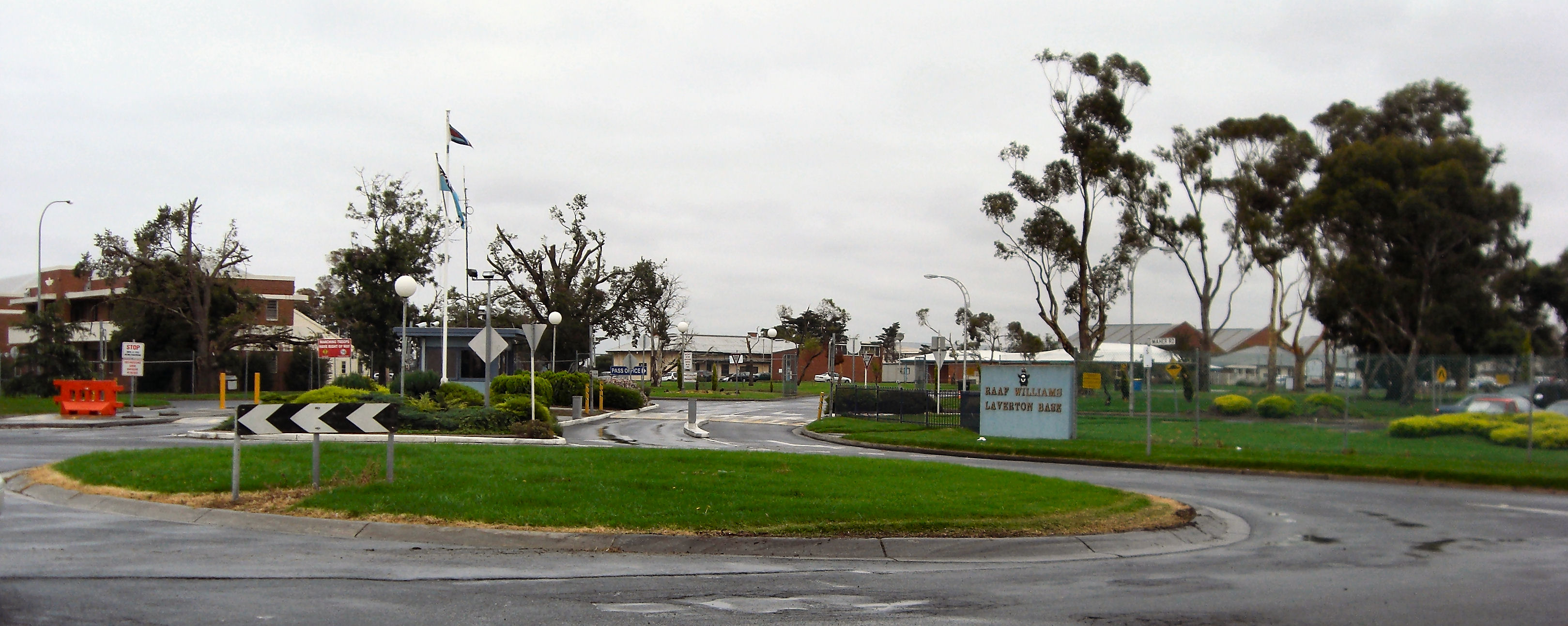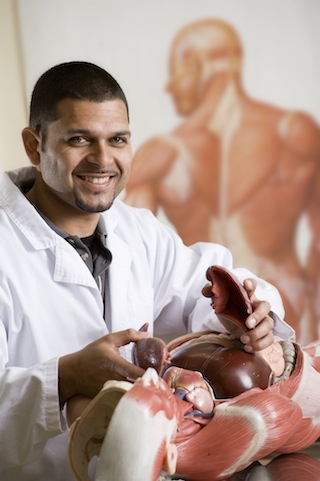|
|
||
|
||
|
Privacy Policy | Editorial Policy | Profit Policy | Join the Association | List of Members | Contact us | Index | Links |
||
|
Back Go to page: 1 2 3 4 5 6 7 8 9 10 11 12 13 14 15 16 17 18 19 20 Forward
|
||
|
Your Say!
|
||
|
|
||
|
While the Association does not necessary agree or disagree with everything on this page, we do respect the right of everyone to have their say.
|
||
|
Ballarat Pete Schoutens got in touch, he says, “Sorry I haven't replied earlier, been busy with the local community radio station here in Ballarat and the Ballarat Aero Club. This all started while I was duty pilot a few Sundays ago. A fellow called Keith Pitman, who was a committee member of the Ballarat Airforce Assc. talked to me about a contact he has had with the local council regarding the building that was the Officers Mess at the Aerodrome.
The council is keen to keep some buildings in memory of the time when it was an RAAF Base. I had a councillor on my radio program (Grant Tillet) to chat about it. They, the councillors whom have the aerodrome on their portfolio (and the local mayor is one of those) seem to be prepared to spend the money to revitalise the building. Not cheap, as you can imagine!!
The Airforce had the Ballarat Aerodrome as a training base for about 40 years. During WWII it was a Wireless Air Gunners School, then it became the RAAF School of Radio, until 1961. Being an ex Radschool student and also an ex Instructor, (at Laverton) I would like to see a building that could house a lot of RadSchool history. An ex Officers Mess sounds appropriate?
The building needs a lot of renovations, such as a roof replacement (asbestos) and other things. The council has already renovated several other ex RAAF buildings there. The Ballarat Airforce Ass. would be happy to have a group of ex Radschool people share an interest in the building. It could be a great place for functions, such as re-union’s etc.
I would like to start a list of any ex Radschool people or ex WAG”S who would be interested in the above. Also if anyone has any item or items (photographs, etc.) that would be part of the history we would like to list those?
I have chatted with the Air Force Assc. people here and they seem positive to those thoughts.
So, what do you think?
If you would be interested in discussing this further, please fill in the form below and send it to me.
|
||
|
Global Warming.
Laurie Lindsay sent us this: “Professor Giaever’s academic qualifications in solid state physics are truly impressive - see Vol 55, Page 20. However, they do not make him an authority on atmospheric physics and/or meteorology. If you are going to peddle articles by climate change sceptics at least find somebody with qualifications in the right area. It may be difficult because 98% of climate scientists believe that the changes to our planet are anthropogenic (caused or produced by humans). The other 2% are in the pay of the fossil fuel industry.
Perhaps they may be able to explain why the Northwest Passage has suddenly opened up (see HERE) In the 19th century many sailors lost their lives trying to cross the top of North America and now it can be done with ease. I wonder why?”
Different people have different opinions – that’s why they make Holdens and Falcons. I accept that the climate is changing, blind Freddy can see that, but I’m still of the opinion that it’s natural, it has nothing to do with the level of CO2 in our atmosphere – and if we all disappeared tomorrow the change would still occur. tb
Leadership crisis dogs RSL.
Recent allegations of financial misconduct by senior figures in the RSL have breached the faith of those who passed the torch of integrity to Australia’s largest ex-service organisation. It appears that some have been more concerned with lining their own pockets on the side than protecting the legacy of the movement and the welfare of their veterans.
The army of volunteers in sub-branches throughout NSW have every right to feel betrayed as their charitable status is now under threat and the image of their RSL has been seriously tarnished.
While the RSL is regarded as the chief custodian of our ANZAC legacy based on the care of veterans, it has become clear for some time that the organisation has become more introverted with its ageing membership. The constitution they operate under belongs to the era of the .303 rifle. Notwithstanding this, the voluntary work of foot soldiers in the movement is selfless and extensive. Welfare officers, women’s auxiliaries and members provide advice and liaison with local, state and federal Government agencies. They conduct Anzac Day services around the country, organise commemorative services on other significant occasions, add dignity to funerals of fellow veterans and care for those unable to care for themselves. Their work is often unheralded but they provide the glue that holds the organisation together.
In a recent book ‘Anzac’s Long Shadow’ the author, James Brown, wrote of the current situation in regard to military charities:
Duplication of services is rife; data is rare, as is deep cooperation and coordination among charities. Big ideas are lacking. Hundreds of millions of dollars and countless hours are being consumed by a social industry predicated on care, but only the most slender trickle of aid is coming out for veterans in return. While we’ve been focused on the centenary of Anzac, deep problems have developed in the military charity sector.
He went on to observe:
Today the service clubs are a multi-billion-dollar industry employing thousands, with a 40 per cent share of New South Wale’s $3.2 billion of annual gaming machine profits. The RSL and clubs network brings together thousands of unselfish volunteers dedicated to helping one another and bound by the ideal of community. All are linked by the shared sacred rites of Anzac and Anzac Day, the imagery of military service and a mutual commitment to care for the veterans of Australia’s wars.
Except that they’re often not linked.
Brown is a bright young Afghanistan veteran – his book should be compulsory reading for those interested in preserving the future of Anzac and protecting its ideals.
Unfortunately the leadership of the movement has not adapted to change and has vacated the field of public debate.
Their silence on these and other contemporary issues has led to a plethora of breakaway groups such as the Vietnam Veterans Association, Soldier On, Walking Wounded, Mates4Mates, War Widows and countless other battalion, flight and naval associations.
To further complicate matters in NSW, RSL sub-branches and clubs are subject to different acts of parliament – as a result they spend millions of dollars fighting each other in court over the ownership of land bequeathed to them. The founding fathers would be greatly distressed over the emergence of the courtroom as the new battlefield. The beneficiaries of their vision were supposed to be veterans – not lawyers!
Reform of the RSL in NSW is now not an option if they wish to regain the trust of their membership, the public and government. They need a wholesale change of guard to provide the leadership necessary to unite the ex-service community and articulate a clear vision for the protection and interpretation of our military heritage; the welfare of current and ex-servicemen and women; and the care of our aged veterans. They need to lobby government to ensure our wartime history is an integral part of our education system at primary, secondary and tertiary level.
And more importantly they need to re-enter the public debate in areas
such as the social engineering within the Australian Defence Force; the
Marxist indoctrination of young students under the guise of ‘Safe
Schools’; and the basic freedoms our veterans fought and died for –
particularly freedom of speech.
To paraphrase General Douglas Macarthur in his address to West Point Cadets in 1942 the RSL is the leaven which binds together the entire fabric of our veteran community. If they fail a million ghosts in khaki, royal blue and bellbottoms will rise from their white crosses thundering those magic words: “Duty – Honour – Country”.
We are the dead . . . Take up our quarrel with the foe To you from failing hands we throw The torch, be yours to hold it high If ye break faith with us who die We shall not sleep, though poppies grow In Flanders fields
|
||
|
My wife asked me to toast some bread. So I raised my glass and said "here’s to bread"
|
||
|
Caribou A4-173 at Ba To.
John McDougall sent us this: “I've received a request from John Davies, an Elec. Fitter with RTFV/35 Sqn. in 1966. He was part of a recovery team that went to Ba To in August '66 to repair/rebuild Caribou A4-173 after it crashed on landing during a resupply mission. He is endeavouring to compile a list of names of the blokes involved for a story of the event. I have told him that Laurie Rappo and myself were both engine fitters, Peter “Perce” Mansfield was the framie, and Wally Solomoms was the Enfo but I cannot remember the other 5 or 6 who were there with us. If you were there or know of who was, would you please advise me so I can pass on the info.
You can see info on the incident HERE.” If you can help, let us know and we’ll pass on the info to John Mac - tb
In 1986 John Davies was posted to Washington DC as TLO NAVAIR which, he says, “was my dream job. During my posting, I met and married an American lady. We had one son born in the US and a second son in Melbourne (I was posted back to HQSC). I left the RAAF in 1990 and immigrated back to the US in 1994. I am now a dual citizen and worked for a company called CACI for most of my working life over here. I worked in software process development area and implemented CMM, CMMI and ISO-9001 models and standards throughout the company. I retired in February 2016 and am enjoying my time. I get back to Australia about every 2 to 3 years. This year I was back for 6 weeks in Feb/Mar 16”.
|
||
|
If everything seems to be going well, you have obviously overlooked something.
|
||
|
Mozzie at Ballarat.
Ken Hunt says: “After reading the current edition of the RAM I am again reminded of a complete Mosquito in a hangar at Ballarat – well it looked complete to a young inexperienced Nasho climbing inside. I also know of another Nasho who 'borrowed' the small fire extinguisher from it.
It was there in early 1955 and I wonder why? Can anyone help?
Keep up the good work, it is appreciated.
|
||
|
A blonde decided to redecorate her bedroom. She wasn't sure how many rolls of wallpaper she would need, but she knew that her blonde friend from next door had recently done the same job and the two rooms were identical in size. "Buffy," she said, "How many rolls of wallpaper did you buy for your bedroom?" "Ten," said Buffy. So the blonde bought the ten rolls of paper and did the job, but she had 2 rolls leftover. "Buffy," she said. "I bought ten rolls of wallpaper for the bedroom, but I've got 2 leftover!" "Yes," said Buffy. "So did I."
|
||
|
The Neptune.
Adrian Heinrich says: “Someone sent me the video below of (I think) a Dutch Neppy being pre-flighted, fuelled, started, taxied and then flown. I couldn’t understand a word of what they were saying but it brought back many memories from my time working on 10SQN’s Neppies, especially the re-fuelling! The two tip tanks were scarey, after filling the two main tanks you were perched out at the wingtip, trying to bear the weight of the hose/nozzle and when you got to a certain fuel level the main oleo strut would start creaking and suddenly retract a little, this small movement at the strut was amplified many times at the wingtip and the only thing you could hang onto with your free hand was the earth lead plug – you became a bit paranoid listening for the creak and waiting for the sudden oleo collapse.
Ah - Memories!!!
|
||
|
|
||
|
Hey now!!
Ivor Rothwell writes: “Re Vol 48, Page 19, Tut tut my old friend and colleague John Smythe! I was not a Royal Navy exchange officer but (although formerly Royal Navy) a full-bore dyed in the wool Flight Lieutenant RAAF. I was OIC WRRS from December 1967 to December 1970. On promotion to Squadron Leader in January 1971 I went to DEFAIR (as it then was) in Canberra for two years thence HQOC in the Joint Warfare Group. I was promoted to Wing Commander in June 1976 and transferred to the RAN in August 1978, retiring in 1984”.
Pilotless F16 aircraft.
John Smythe writes: “Re Volume: 56, Page 9, Comments: To: Alan George; Sorry "Your ‘A first for a full-size jet aircraft’ was second by 60 years – see HERE. I was at Woomera in mid '60s and saw a meteor land with empty cockpit. Maybe not as sophisticated as the one you mentioned, – but it still did it.”
Make the RSL great again!
Kel Ryan, (right) a Life Member of the RSL says: “The usual thing among men is that when they want something they will, without any reflection, leave that to hope, while they will employ the full force of reason in rejecting what they find unpalatable”. Thucydides, History of the Peloponnesian War.
The challenge to solving a problem is first to recognise that there is one. The leadership of the RSL is mute to its present situation despite the rapidly declining membership, an aging membership and the almost daily establishment of new, more dynamic representative organisations.
Why is this so?
Why cannot the national leadership see what so many members of the
Australian Defence community can see? Put
What is to be done?
The future of the RSL lies in it becoming a truly national organisation reflecting the organisational and governance practices of the 21st century. Some years ago, the Queensland and Victorian branches of the RSL contributed $30,000 each for a strategic review into the national organisation. Views were canvassed and a report submitted. Nothing was heard of the report until this writer asked for a copy of the report. “No, you cannot have it as it was not what we wanted!”
This response by the then President, Ken Doolan (right), sums up the
challenge the RSL has in facing the future. The
A refresher course in the Military Appreciation process is a good place for the national leadership to start in defining the future course for the National RSL. The Military appreciation is a logical process of reasoning with the aim of determining the best or the better course of action in any given circumstance. It requires thinking outside of the square, outside of the past and into the future. It demands a flexibility of thought that the membership is yet to see coming from the present leadership.
The RSL is a national organisation in the minds of many. A wide ranging exhaustive strategic review, including input from across the membership and from outside the organisation is a good place to start. In such a review the views of the national leadership do not warrant special deference. Constructive input from both the membership, the other ex-service organisations and the broad public must be sought. This is not a time to hunker down below the parapet, shun public discussion and hope that all will peter out. Good men and women must step forward.
The various state branches need to develop their views on the future also.
Now is the time for the RSL leadership to regain and to dominate in the art of political advocacy so effectively practiced by those leaders who sprang from the AIF era. They lobbied, they persevered and they forced government to listen to the voice of the nation’s warriors. They were not mollified by countless media releases on nebulous issues or meaningless speeches. They spoke on issues that the membership wanted them to speak, national defence, national infrastructure, national unity, loyalty and national pride. They, on the membership's behalf, had earned the right to address such issues. Today the leadership is mute.
I ask that the RSL leadership not be overwhelmed by the task. The future of this great organisation is in your hands. Don’t let the membership and the broader ex-service community down by shirking the challenge.
Kel Ryan is a Life Member of the RSL and had held elected office at sub-branch and state Branch level. He has also been Chair of the Queensland Forum of Ex-Service Organisations for five years, President of the Royal Australian Regiment Association in Queensland and is currently the Vice President of the Defence Force Welfare Association Far North Queensland. His PhD research is addressing the issue of ‘advocacy and the Australian Defence Community.
|
||
|
Whether a man winds up with a nest egg, or a goose egg, depends a lot on the kind of chick he marries.
|
||
|
Skeptics unite!!
Barry Williams (right) writes: “Re
Vol 30, Page 20, The tale I am about to unfold is so rife with
coincidence that were I to try
My name is Barry “Barney” Williams and I served in the RAAF as an electrical fitter from No 9 (Engineering) Apprentice Course (1955-57) at RSTT Forest Hill, Wagga, until I took my discharge as a sergeant from 76 (Mirage) Sqn at Williamtown in 1970. My 12 years were served at Amberley, Butterworth, Ubon and Williamtown.
During my time living in the Sgts Mess at W’town I formed a drinking association with, among others, a Rad Tech (G) by the name of Harry Wilson. When I was discharged I lost touch with many of my old mates, Harry included, but in a recent fit of nostalgia I thought to look him up via Google. As he was several years my senior and as spring-chicken-hood is a long way in my past, I didn’t hold out much hope that he would still be around, but thought I might find some information. I didn’t find anything about Harry but I did find your magazine and this is where the coincidences start piling up.
In one of your magazines you questioned whether ex-RAAF people tended to remain in their trades after discharge. In my case, yes and no. Initially I worked as a rep for a couple of companies that supplied process control equipment to industry but then, fortuitously, I found myself involved in organising trade shows, which kept me busy for several years, largely under contract to the US Dept of Commerce via their Consulate General in Sydney.
During one of my aviation trade shows I bumped into a retired Wing Cdr, Jim Treadwell, whom I had known as a young FO in Malaya. Jim said he was interested in how trade shows were organised and we arranged to meet the following week. Jim came along with another, older, ex-pilot by the name of Arthur ‘Nat’ Gould whose remarkable story you can read HERE.
They had been involved in a couple of the Schofields flying displays and had an idea about a fully-fledged flying and trade show in association with the Bicentennial Committee. I was delighted to give them all the help I could and introduced them to most of the movers and shakers in the exhibition industry, as well as promising to lobby the US DOC to include a USA Pavilion if the show ever got off the ground (pun intended). Of course it did, the Bicentennial Air Show at Richmond, the USA did have a large pavilion in the Trade Show section which I managed and a great time was had by all.
But it was my part-time activities that gave rise to even more of the coincidences I mentioned. In 1980 I joined an organisation called Australian Skeptics, recently set up by Dick Smith and Phillip Adams. Its purpose was to investigate and expose to critical analysis popular beliefs based on pseudo-scientific or paranormal claims. I notice that you have a correspondent or two in your magazine with similar interests. In 1985 I was elected as national president of the organisation which had developed branches in each state and had begun publishing a quarterly magazine, the Skeptic, edited by a friend who was a professional trade journal editor.
In 1990 the editor of the Skeptic had some domestic problems and told me he had to resign forthwith. With three weeks until the publishing deadline and no idea where I could find another experienced editor, I begged him to stay on until we could find a replacement. Because of his circumstances, he couldn’t do that but suggested that I do the job and he would assist where he could.
Now I had precisely no editing experience, was unfamiliar with the new computer we had recently acquired (a Mac Plus for those interested in antiquities) and was pretty busy with my job, but I agreed to do just the one issue and find someone else when I had a bit more time. Needless to say, that ‘bit more time’ never eventuated and nineteen years later when I decided to retire from all my positions I had edited 76 issues and loved every minute of it. Have a look at some of the issues. www.skeptics.com.au/the-magazine/
It wasn’t all hard yakka though. In 1996 we received notice that we were the beneficiaries of a very large bequest from a citizen of Queensland who had recently died. This, too, was the result of a remarkable coincidence.
The man was pretty much a recluse, living in his old family mansion in regional Qld, but one who had a deep interest in scientific and medical matters. He had heard “someone from some organisation” on the radio talking about the importance of scepticism to the scientific enterprise. Liking what he had heard he spoke to his next-door neighbour, one of his rare friends, about changing his will to help this organisation do its work - if he could find out who they were. His neighbour happened to be the science master at the local high school and the only Skeptic subscriber in the town. So we found ourselves the recipients of somewhere north of $1.2 million.
This windfall changed things considerably among the Skeptics, allowing us to sponsor various prizes and allowing me to spend all my time running the organisation and editing the magazine. Among my new duties was providing a monthly column. The Naked Skeptic, on matters skeptical to Australasian Science magazine.
This is where the final coincidence occurs. When searching for info about Harry Wilson and finding your magazine, one of the references was to your Vol 30, page 20 and a brief piece about the origin of the phrase “Freeze the Balls off a Brass Monkey” which had been the subject of one of my Naked Skeptic columns, itself a condensed version of a much longer article in the Skeptic. I attach the Naked Skeptic piece for your delectation.
Finally, let me say how much I admire your dedication in producing your fine magazine. I, if no one else, realise just how much hard work it takes. Long may it continue.
Brass monkey balderdash The Naked Skeptic Australasian Science 17 October 2007
THE standard response of Skeptics when someone pronounces on a new paranormal claim is “Where is your evidence”? Sometimes the evidence is a physical thing, but sometimes it can only be found by a process of logical deduction. Let me talk about a case in which both approaches can be used. Most readers will have come across the following claim about the origin of a common phrase - it has been circulated on the internet for a number of years, it pops up in the media from time to time, and I have even seen it quoted in a recently published book on origins of phrases.
This is how it goes: In the old Royal Navy, every sailing ship had
cannon for protection. Cannon required round iron
Brass was used because the cannonballs wouldn’t rust on the brass monkey, but would rust on an iron one. When temperature falls, brass contracts faster than iron. As it got cold on the gun decks, the indentations in the brass monkey would get smaller than the iron cannonballs they were holding. If the temperature got cold enough, the bottom layer of cannonballs would pop out of the indentations, spilling the entire pyramid over the deck. Thus it was, quite literally, “cold enough to freeze the balls off a brass monkey”. And so, another familiar phrase became part of the language.
Nice story. What a pity it’s utter bal(l)derdash. Why do I say so? Let’s look at the direct evidence first.
With the popularity of historical fiction based around the Napoleonic Wars, quite a few authors (C S Forester, Patrick O’Brian et al) have published books that use contemporary records of the Royal Navy to describe what actually went on in the “wooden walls” of Nelson’s day. In none of them will you find any reference to either brass monkeys or this method of storing cannonballs. What they do say is that “ready shot” was kept in indentations in wooden hatch covers or in wooden troughs built inside the hull between the guns. They were known as “shot garlands”.
Seems reasonable, but as we Skeptics like to say, “absence of evidence is not evidence of absence”, so let’s use deduction to see if it is likely to be true.
The standard “ship of the line” in Nelson’s navy was the Third Rate 74, which mounted 28 guns (14 per side) on each of its two gun decks and 18 (usually lighter calibre) guns on the forecastle and quarter deck, totalling 74, hence the name.
|
||
|
|
||
|
|
||
|
The lower, enclosed, gun deck usually mounted 32 pounders (15 cm calibre) while the upper gun deck, which was partially open to the elements, mounted 24 pounders. As each gun needed a crew of 6 or 7, these ships carried about 600 men in a hull that averaged a little over 50m by 10m. The majority of these men slept and ate on the lower gun deck, so it tended to be a little cosy.
That sets the scene, so let’s now look at the scenario. Sailing ships are, unsurprisingly, at the mercy of the wind and very little happens quickly. In the classic battle of the period - Trafalgar - after Nelson sighted the combined French/Spanish fleets, he split his force into two lines and, in light winds, sailed directly towards the enemy line for an hour before any of his ships fired a shot. Plenty of time to bring up balls from where they were stored below decks and put them in their wooden garlands.
|
||
|
|
||
|
Then there is the case that cannonballs comprised only half the load for the guns. The other half was the propellant, gunpowder in canvas bags, and you certainly didn’t want lots of those lying around waiting to be used when a battle was raging. They were stored in the magazine, which was always well below the waterline to avoid the risk of being hit by an enemy shot. During a battle, it was the job of the junior member of each gun crew (often boys of only 12 or 13). They were called “powder monkeys” (which is the only reference to monkeys you can find in contemporary writing) to bring up powder bags from the magazine to their gun. Royal Navy gun crews could typically fire three shots every five minutes, so these lads were kept busy. And - can you imagine the noise?? No purpose would be served by having up to 30 balls per gun if you had to wait for the powder bags anyway - and you did have to wait.
Other problems? Well, a pyramid is a very stable structure - as long as
it sits on a stable base. But a ship under sail is
Yes, brass and cast iron do have different coefficients of expansion, but for that to cause any more instability than the motion of the ship caused anyway, you would need an inordinately rapid and prolonged temperature drop to cause the balls to be frozen off the monkey as the legend insists. (For example, a temperature drop of 100 degrees would be needed to shrink a metre-long brass plate by one millimetre, which would not be anywhere near enough to cause the claimed effect.) Maybe the iron balls wouldn’t “rust” to the brass, but they would certainly rust to each other, so nothing is to be gained there. Then you have two dissimilar metals in contact in a wet and salty environment, interacting to make crude batteries (through electrolysis) with the potential to cause sparks. On a wooden ship with miles of tar-soaked rope, that’s the last thing you would need.
So here we have a popular story that has no documentary evidence to support it, and each element of which is patently wrong. Not so much an urban legend as a nautical lie.
While I have your attention, did you know that when action was not imminent, and particularly in heavy weather, the guns on Royal Navy ships were tightly lashed up to the sides of the gun deck? Each 32-pounder was more than 3m long, weighed 2-3 tonnes and sat on a four-wheeled carriage. Imagine 28 of those rolling around the deck during a storm, while you were trying to sleep in your hammock, or eating your lunch, and you will see why the Navy was not in favour of “loose cannon”.
You can find out more about phrase origins at www.phrases.org.uk/meanings which now has a very similar explanation of the brass monkey phrase to mine above, though when I first consulted it retailed the popular, though incorrect version.
A new way to teach?
Philip Campion wrote: “I have been looking through the Radschool magazines and many, many hours have been absorbed reading the articles. Please keep up the good work. My connection with the organisation goes back to childhood when my father was an instructor at Ballarat. Happy memories of us roaring along the runway in his Ford Prefect on the way home to our married quarter. Getting a tour of the armoury and the kite competitions between Gordon Webb, the armourer and the old man. Dad won with a box kite made of broom sticks, we boys didn't get a go as it would have lifted us off. Postings to Laverton, Amberley, OPCOM and Canberra ensued so it was natural that after an unsuccessful banking career of 3 months I should join the RAAF. After recruit course I was posted to Radschool to train as a RADTECH (G) and found myself on no 34RMT in mid 1969.
|
||
|
|
||
|
A new EDO was at the unit and had managed to convince the hierarchy that instructors were unnecessary. Our group of young men was given a syllabus, text books, a classroom and was told the first exam was in 2 month's time. Well, what a great idea, there were 2 older married guys on the course and they managed to get through the exam whereas we younger ones boozed, rode motorbikes and chased women, recovering next day in the classroom.
Needless to say, we all failed the supp and appeared before HoHo and the board. We were back-coursed to 35 RMT which was run under the same regime. Well we were hardly any older and had not acquired any more brains and so most of that course found itself up before the board again.
This time it was GH or COOKSASS time and that was the end of that.
My surname being close to the front of the alphabet I was pretty much first to face them. I was ready to admit that I had not done a scrap of work, but was of the opinion that 18 year olds out in the wide world need a boot on their necks to concentrate their minds on the job at hand. I refused to sign the paperwork which would consign me to a life of cleaning toilets and sweeping paths and left the board in somewhat of a quandary.
They called me back and offered me, and a host of others, a posting to RSTT as cat2 trainees. I have only got as far as edition no 43 of the magazine and see no mention of 34 RMT. The photo of 35 RMT has no familiar faces at all. These ill-fated courses seem to have been airbrushed from the history of Radschool. I wonder how many of those self-studiers got through?
At Wagga, it seemed that all we needed was the boot on our necks and we all completed our technical training and emerged as fitters of one kind or another. What a potential waste for the wireless world, I can only imagine that the administration of Radschool realised that it had to put instructors back in classrooms and adopted a sympathetic view towards us.
I completed an instrument fitter's course, got the highest marks and went on to serve at 481, 76, 75, 34, 38 and 37 SQNs finishing the last 10 years of my career as a Flight Engineer on Hercs.
I remember John Broughton well, I was at 76 SQN and had been charged for leaving my car on the parade ground on Tuesday morning. Fearless Fred admitted that he hadn't meant to charge me and the SENGO told me that he would look after me. The bastard gave me 7 days CB. John was Orderly Sergeant over the weekend and I was effectively in his custody. "Come with me lad" he said, drove me to the hangar and installed me in Radio section for the weekend with instructions to make sure all the magazines were of sufficiently high standard. The week's guard commander was Mick Sibley and he also tasked me with similar important jobs. This was an era when the service looked after its own and individual units did as well. I bet you are not asked to sign a blank leave application for the boss's drawer any more.
Another old hand, I was tapped on the shoulder in Alice Springs in the 80s. None other than Ted McEvoy. Hope you are well, Ted.
I had some of the happiest years of my life in the RAAF and miss the people. I feel that I got out just in time though, we had a CAS whose sole agenda was to have us swing our arms shoulder high, digging foxholes and handing our service over to the Army. Keating was making noises about cancelling the 20 year pension and making it age 55.
When I see the medals some of our current members are wearing, I can't help feeling so proud of the efforts of those airmen and women despite not only facing an enemy but contending with the cowardice of political correctness.
I was so fortunate not to have been in harm's way and consider my years to have been the best.
|
||
|
When a man marries a woman, they become one; but the trouble starts when they try to decide which one.
|
||
|
Doctors.
Stan Seymour writes: "My doctor tells me that 17,000 docs will graduate this year, in Australia, many of whom will be overseas students, however there is a loop hole for these O/S docs to work permanently in Australia. With a visa, they can stay and work here for thirteen months, then they MUST leave the country for ONE month, (holidays???) then they are free to work here again for another 13 months -- ad infinitum. Before you know it, no Australians will bother practicing medicine. Our potential doctors will be driving busses, or working overseas where they are appreciated.
Another thought, I have a son living in the UK in the IT game. He can’t afford to live in Australia. No one here will pay for his expertise. In the UK and the USA he is in demand as a manager and as a consultant to BIG business, with a commensurate income. Australia will always struggle while we deny our best brains an income worthy of their skills."
|
||
|
Many girls like to marry a military man - he can cook, sew, and make beds and is in good health and he's already used to taking orders.
|
||
|
Radar.
Les Medew writes: G' day, you have helped me out in the past, I love dealing with the Nuts and Bolts, the people who were doing the work, so my question is, how far was the Radar sweep at Laverton good for in 1966 on the "East side" of the bay. I realize the curvature of the Earth plays a part but let's say over Dandenong or Moorabbin Airport could aircraft be detected at all and if so how close to the "ground". I know I'm stretching the friendship but hope somebody in your membership worked in the Radar side of things as I would really like to know.
Mortality Files.
The 2nd tour B Company 4 RAR/NZ (ANZAC) Battalion members are taking over where the 1st tour guys left off in keeping up the list of Mortality Files of Vietnam Veterans. All services (Navy/Army/Air force) are included in the mortality list and I am seeking your help in:
|
||
|
|
||
|
Please try to be as exact as possible with the cause of death. “Passed away peacefully” is not a cause of death. We do realise that some of this information may not be available, but every bit of information sent will be included in the person’s entry on the list.
Future research by any relative or member of the public will be made a lot easier if the information is accurate and complete.
John “Mac” McGovern Ex 4Platoon, B Company 4 RAR/NZ (ANZAC) Battalion 2nd tour
|
||
|
Old age is when former classmates are so gray and wrinkled and bald, they don't recognize you. |
||
|
|
||
|
|
||
|
|
||
|
|
||
|
|
||
|
|

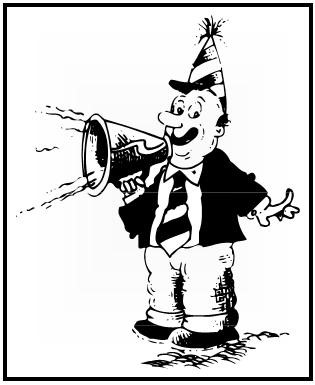
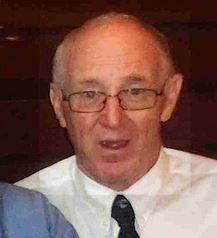
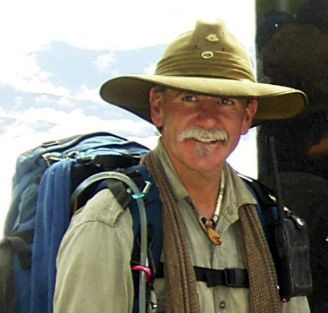
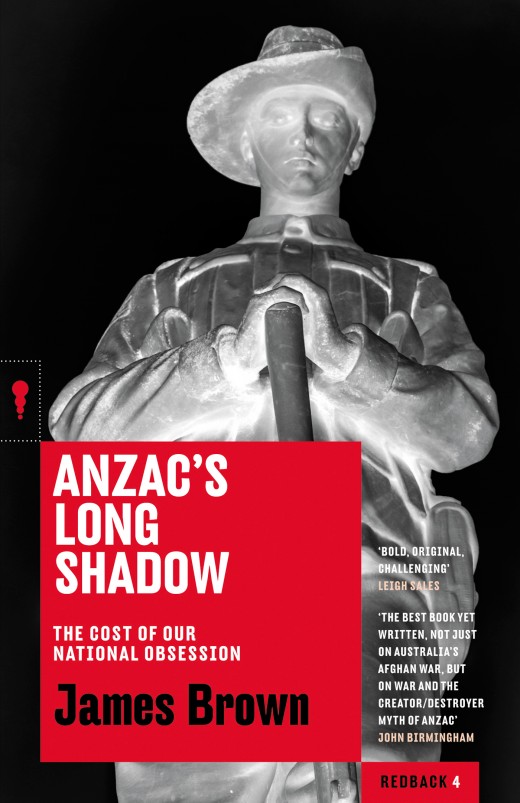
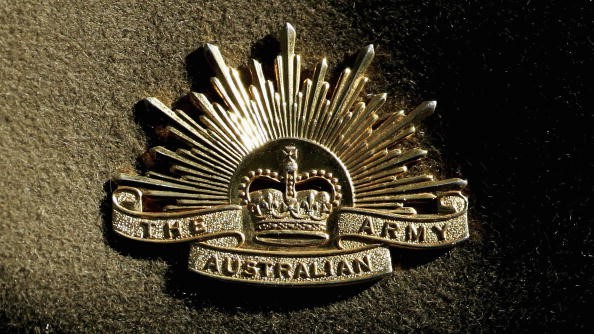
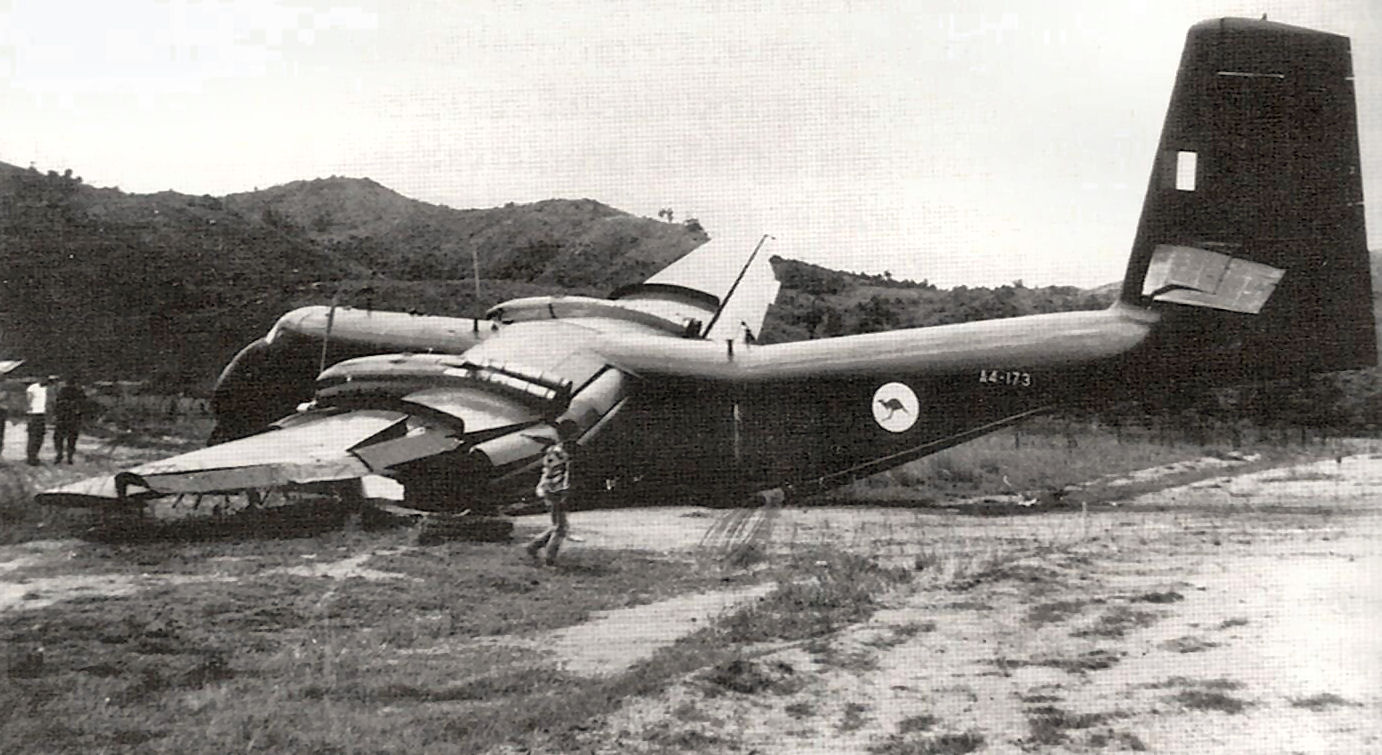
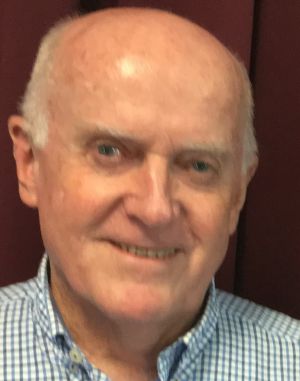
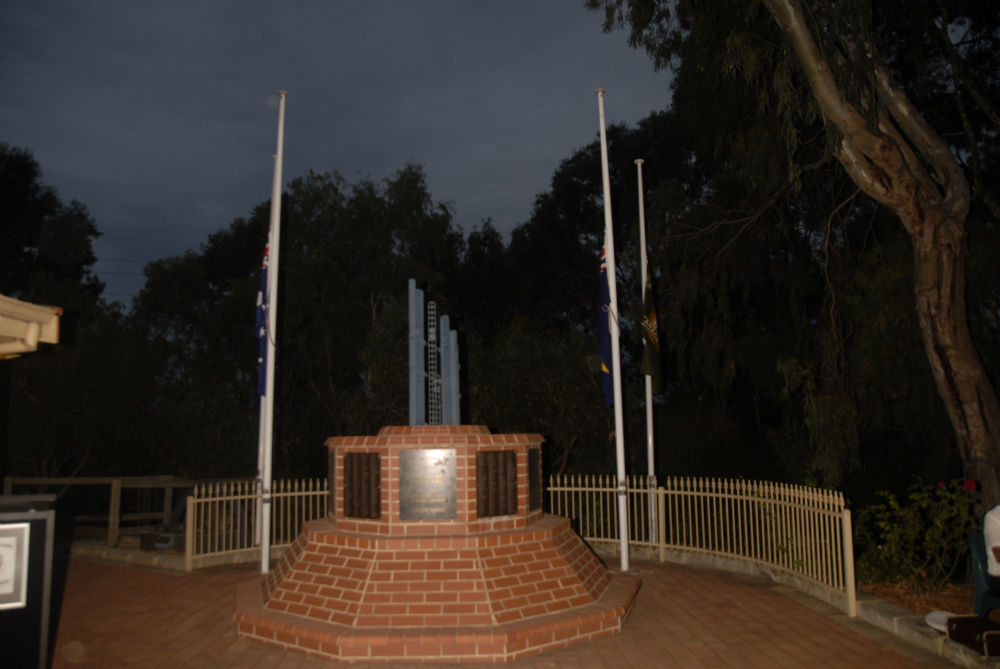 simply the leadership is in denial. They are content with the status quo
and their place in it. Let us be clear on one thing in this developing
discussion about the future of the RSL. The RSL as a national
organisation must survive. It must remain as an integral part of the
voice of the veteran community. There are too many good men and women
working within it at the sub-branch level who are its face, its soul and
often its best marketing tool. It is they that are being let down by a
national leadership that has failed to articulate a vision for the RSL
in the 21st century.
simply the leadership is in denial. They are content with the status quo
and their place in it. Let us be clear on one thing in this developing
discussion about the future of the RSL. The RSL as a national
organisation must survive. It must remain as an integral part of the
voice of the veteran community. There are too many good men and women
working within it at the sub-branch level who are its face, its soul and
often its best marketing tool. It is they that are being let down by a
national leadership that has failed to articulate a vision for the RSL
in the 21st century.  leadership denies the evidence as it is not what they wanted. Other such
reports and studies over the years have met a similar fate.
leadership denies the evidence as it is not what they wanted. Other such
reports and studies over the years have met a similar fate. 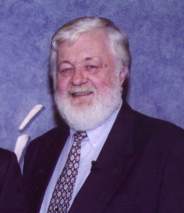 to sell it as fiction it would be rapidly consigned to that editorial
scrap-heap labelled “Don’t waste time with this lunatic”. However, this
is a true story where such rules do not apply.
to sell it as fiction it would be rapidly consigned to that editorial
scrap-heap labelled “Don’t waste time with this lunatic”. However, this
is a true story where such rules do not apply.
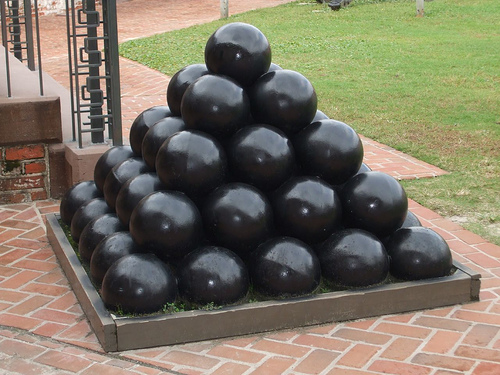 cannonballs. A method was needed to store the cannonballs such that they
could be available for instant use when needed, but in a manner that
would not let them roll around the gun deck. The solution was to stack
them up in a square-based pyramid next to the cannon. The top level of
the stack had one ball, the next level down had four, the next had nine,
the next had sixteen, and so on. Four levels would provide a stack of 30
cannonballs. The only real problem was how to keep the bottom level from
sliding out from under the weight of the higher levels. To do this, they
devised a small brass plate referred to as a “brass monkey,” with a
rounded indentation for each cannonball in the bottom layer.
cannonballs. A method was needed to store the cannonballs such that they
could be available for instant use when needed, but in a manner that
would not let them roll around the gun deck. The solution was to stack
them up in a square-based pyramid next to the cannon. The top level of
the stack had one ball, the next level down had four, the next had nine,
the next had sixteen, and so on. Four levels would provide a stack of 30
cannonballs. The only real problem was how to keep the bottom level from
sliding out from under the weight of the higher levels. To do this, they
devised a small brass plate referred to as a “brass monkey,” with a
rounded indentation for each cannonball in the bottom layer. 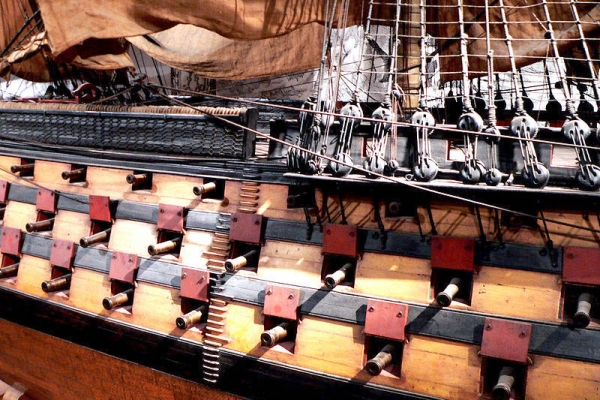
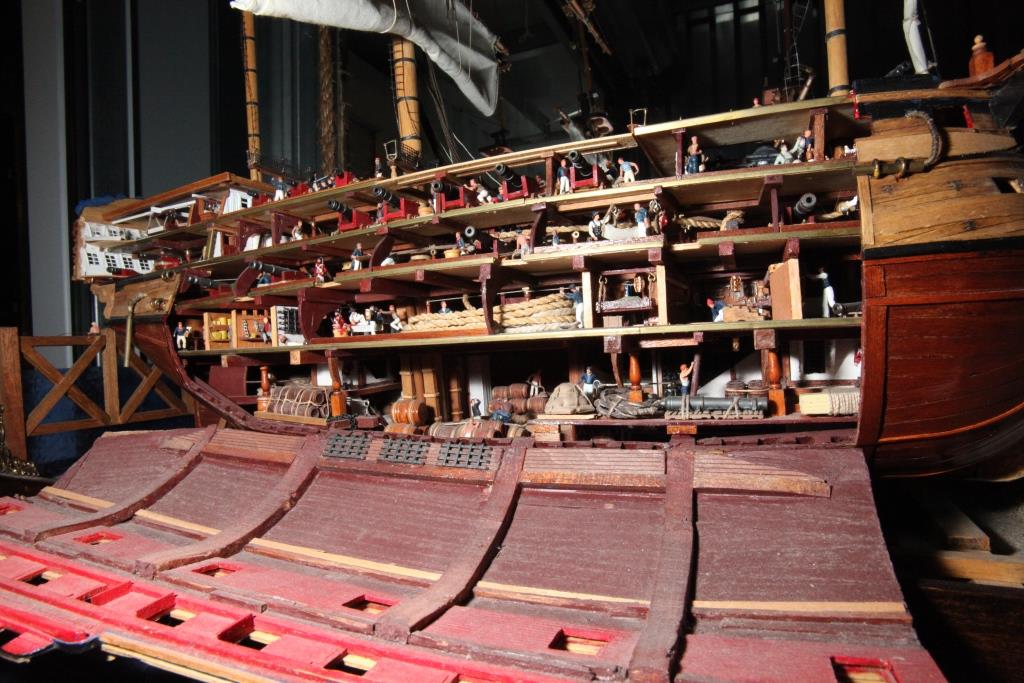
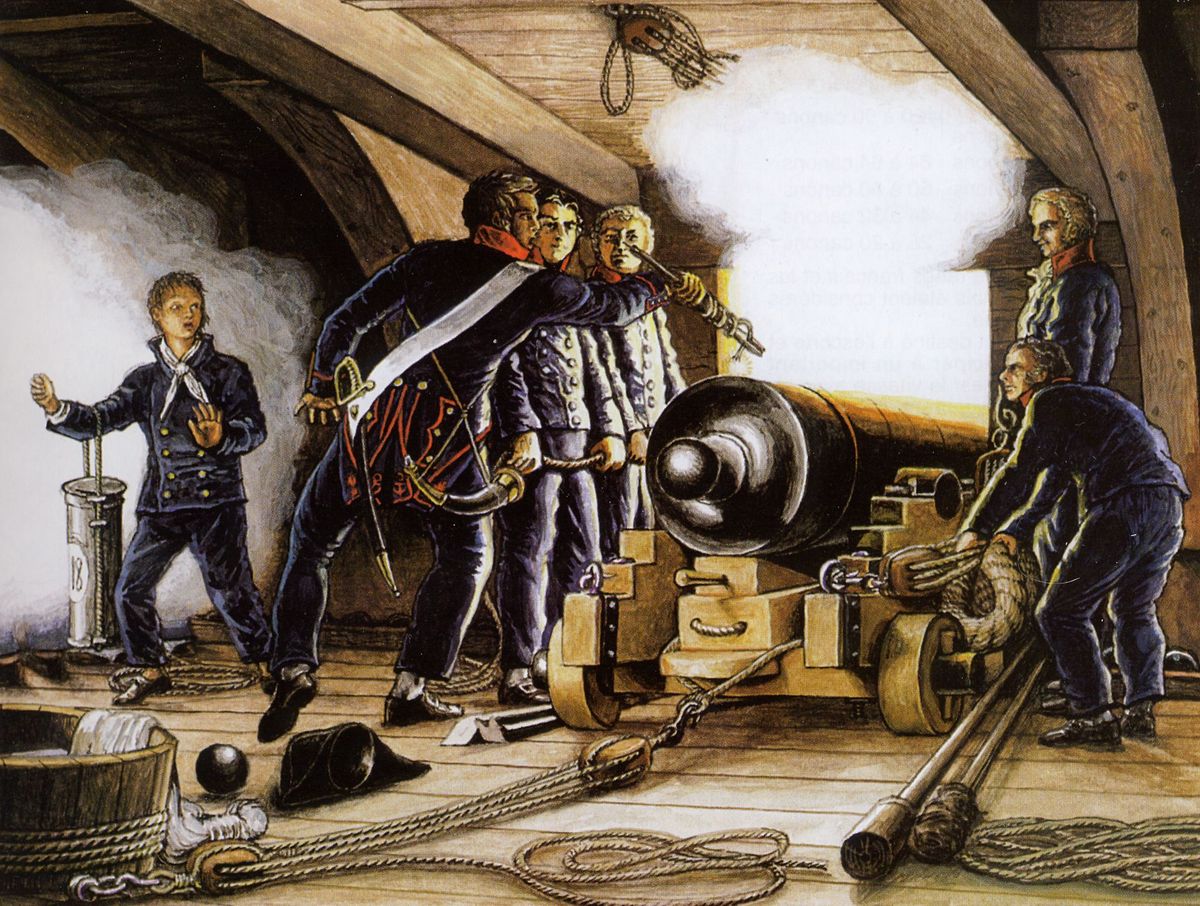 far from that. Unless it was dead calm, with the wind directly astern,
the deck would be heeling at an angle to the horizontal, as well as
pitching and rolling, and if your pyramid is composed of spherical
objects, well, you can see the problem. With up to 850 15cm spheres of
iron, weighing up to 15kg each, rolling around each crowded gun deck,
you wouldn’t need the enemy shooting at you to suffer massive
casualties.
far from that. Unless it was dead calm, with the wind directly astern,
the deck would be heeling at an angle to the horizontal, as well as
pitching and rolling, and if your pyramid is composed of spherical
objects, well, you can see the problem. With up to 850 15cm spheres of
iron, weighing up to 15kg each, rolling around each crowded gun deck,
you wouldn’t need the enemy shooting at you to suffer massive
casualties.